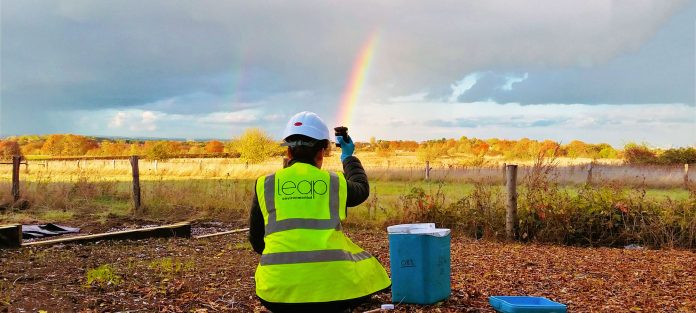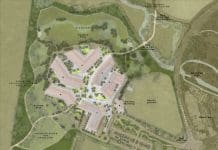LEAP Environmental and the University of Surrey have partnered to calculate carbon emissions from brownfield developments to enable carbon reduction
Civil engineers and develops will benefit from a new tool designed by LEAP Environmental and the University of Surrey, designed to calculate carbon emissions from brownfield developments.
This will enable project managers to identify areas of carbon reduction.
The CReDiT project has already won an award for Best Research, Innovation or Advancement of Science in the Brownfield Sector at the recent Brownfield Awards
The Carbon Reduction Design Tool for brownfield remediation (CReDiT) has been developed by RSK Group company LEAP Environmental, and the University of Surrey as part of a one-year project.
The tool determines carbon emissions from the complex processes involved in remediation.
This includes the excavation of soil, earthwork movements (with machinery), use of raw materials such as topsoil, the transport of material and waste, recycling, and reuse of materials.
LEAP Environmental said that CReDiT is now being applied as standard to all their development projects to evaluate carbon emissions for both remediation and foundation design.
The methodology used to calculate carbon from brownfield developments is being constantly developed with real-life testing
CReDiT is continuing to be developed through ongoing work between LEAP Environmental and the University of Surrey focusing on additional carbon evaluation modules for brownfield development and adaption of the CReDiT user interface.
Professor Susan Hughes, from the University of Surrey, said “CReDiT quantifies carbon emissions and material volumes from different remediation options. It demonstrates that significant carbon savings can be made by effectively reusing or recycling carbon-rich or valuable materials onsite.
“The use of CReDiT has led to a rethink of remediation design, where carbon reduction leads the entire process and where waste materials are re-evaluated as a resource rather than a landfill option.”
CReDiT and its pilot application have been presented at the Nicole workshop in Brussels, the NERC Digital Environment conference, to local contaminated land officers and have been accepted for presentation at the Geolsoc conference.
CReDiT had been specifically designed and tested for use in the UK’s default method of remediating brownfield developments
LEAP MD Richard Brinkworth said: “This is a tool which has been developed to serve the carbon-cutting goals of the wider housing, engineering, design, and constructions sectors and, together with our foundation calculator, it is already a standard tool for LEAP projects.
“Everyone in the housing sector is committed to meeting the 2050 net zero carbon target but we need a radical rethink if this is to be achieved in a meaningful way. That starts with having the right tools for the job.
“LEAP and the university are also mindful of the national need for housing, the pressure to maintain the greenbelt and to optimise land use, with the preference for developments on former industrial or brownfield land. This presents challenges because this land can be contaminated, requiring remedial work to prepare it for construction.”
Richard added: “We’ve tested the application of CReDiT in a wide range of scenarios, including a former landfill site which is arguably among the most challenging of brownfield environments. We are keen to bring a sustainable focus back to remediation.
“By considering the carbon alongside the many other factors affecting remediation projects we are seeking to optimise designs to reduce carbon while maintaining suitability for use”.

















